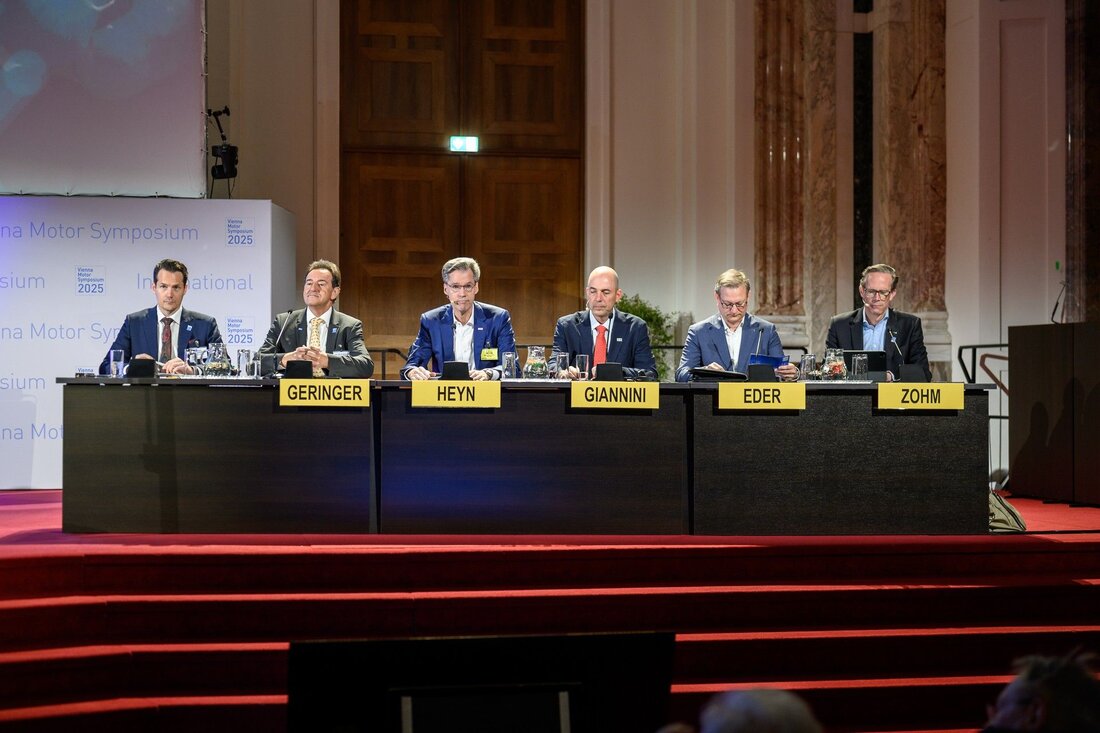The future of the powertrain
In the run-up to the upcoming Vienna Engine Symposium, experts emphasize that purely “exhaust considerations” are the wrong perspective on the path to climate neutrality.

The future of the powertrain
Current legislation that only considers the “exhaust”, i.e. the CO2 emissions of a vehicle without taking into account the production of energy and raw materials, is wrong, does not help the environment and must be changed as quickly as possible. Bernhard Geringer, chairman of the board of the Austrian Association for Motor Vehicle Technology (ÖVK) and organizer of the International Vienna Motor Symposium, emphasized this at a press conference. Together with Ingo Scholten, Chief Technology Officer of Horse Powertrain and Frederik Zohm, Board Member for Research & Development at MAN Truck & Bus, the engine expert pointed out that real climate protection can only be achieved with an overall system view from the “cradle to the grave” (“cradle-to-grave”): “Electric cars can only operate with green electricity and with renewable fuels – from biofuel to synthetic fuel (eFuel) – the entire fleet Vehicles must be operated in a greenhouse gas-neutral manner!”
Appeal to politics
Be it two-wheelers, cars, commercial vehicles, trains, ships, airplanes, municipal vehicles or power sports devices, almost three months before the International Engine Symposium, which will take place from May 14th to 16th in the Vienna Hofburg, Geringer appealed to those responsible in politics and legislation that sustainable mobility must not only take into account the energy converter - i.e. the engine, but also the energy sources. Because there would be no “green” engine, but there would be green energy. This must be strongly promoted in order to enable truly carbon-neutral mobility worldwide. The paths to sustainable mobility are therefore only possible in several ways: At the 46th edition of the Vienna Motor Symposium, the summit meeting of the global mobility industry, manufacturers of new drive concepts from Asia and investors from the Arab region are increasingly in focus: only founded in spring 2024, for example, a joint venture between the Chinese manufacturer Geely, the European Renault Group and the Saudi Arabian Aramco promises to address the old principles of automobile manufacturing revolutionize: Horse Powertrain supplies the self-developed drive trains consisting of combustion engines and compact hybrid drive systems in modular design for many different vehicle manufacturers.
Change in the industrial sector
According to Ingo Scholten, Chief Technology Officer of Horse Powertrain, his company is pioneering a new industrial sector. "The drive train has long been more than just a vehicle component. It has developed into an independent technology sector that is helping to shape the future of mobility. We go beyond the classic supplier role and become pioneers of a new industry. With our deep technical know-how and visionary approach, we enable automotive brands to steer the change in mobility safely and confidently." There are also innovations in drives for trucks and buses. Starting with e-solutions for local distribution transport and urban buses through to large combustion engines for long-distance transport, some of which are powered by hydrogen. Frederik Zohm, Board Member for Research & Development at MAN Truck & Bus: "To decarbonize road freight transport, our focus is on battery-electric vehicles. These currently have clear advantages over other drive concepts in terms of energy efficiency and operating and energy costs. We therefore expect that electric trucks can best serve the vast majority of transport applications. The hydrogen combustion engine or fuel cell technology can be an important emission-free complement to electric trucks, especially in regions without sufficient ones Charging infrastructure.”

 Suche
Suche
 Mein Konto
Mein Konto